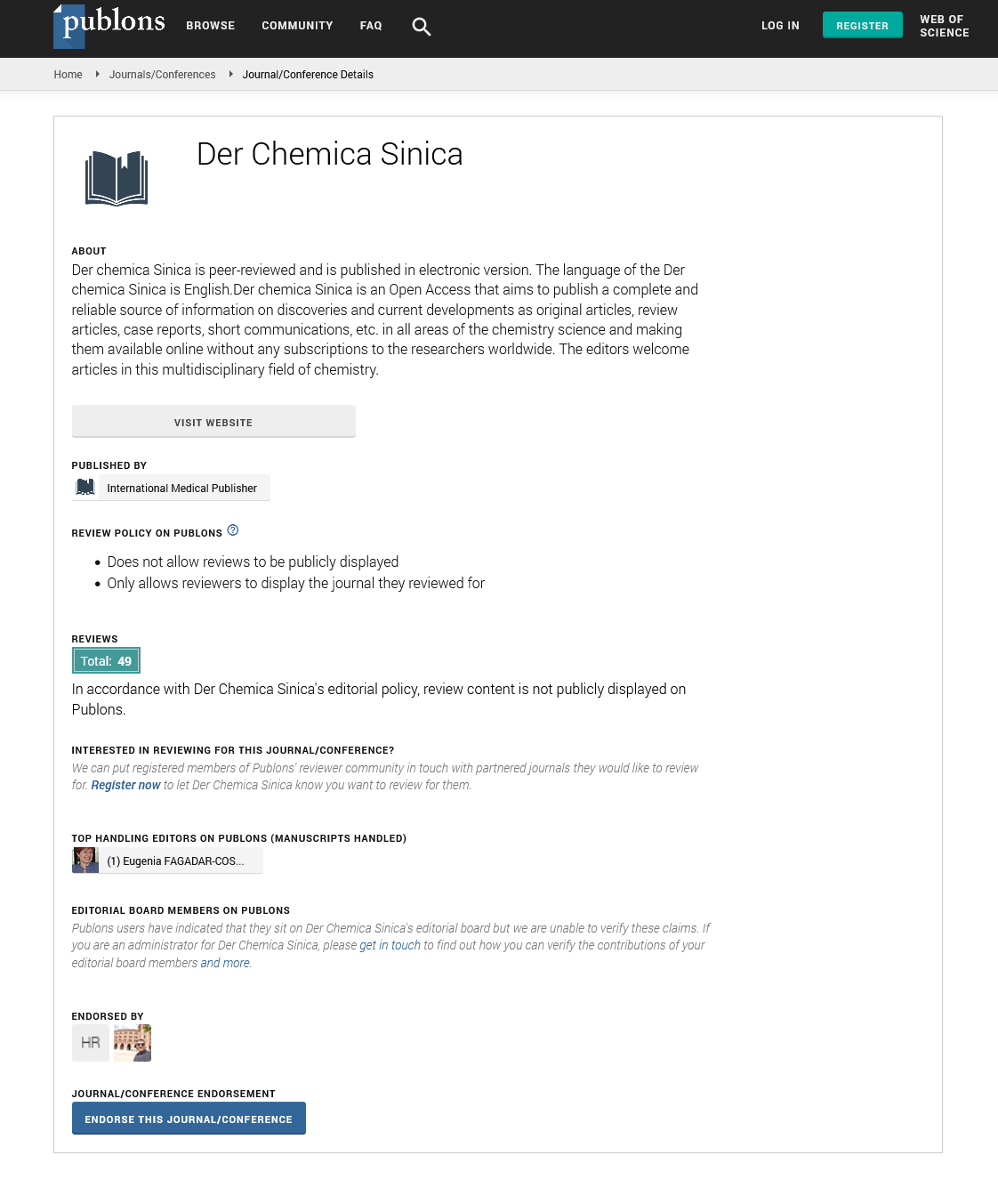ISSN : 0976-8505
Der Chemica Sinica
Abstract
Rice husk as a potential adsorbent for removal of metal ions ÃÆâÃâââ¬Ãâââ¬Å A review
In the ever increasing blind race of industrialization and urbanization environmental contamination by toxic heavy metals is becoming a serious issue for both scientists and masses. These heavy metal contaminants directly or indirectly affect the health of animals in general and human beings in particular by their incremental accumulation in the soil, plants and water bodies. Effluents of many industries like chemical manufacturing, paper, textile, refinery, petrochemicals, metal manufacturing, electroplating, printing, dye, paint, leather goods manufacturing, fertilizer and pesticides and many more are loaded with various heavy metals and their ions. These heavy metal ions enter the various food chains and food webs through air, water and soil causing various diseases and disorders. These metal ions are highly toxic even in their relatively low concentrations, are non biodegradable in nature and have tendency of bioaccumulation. In view of their toxicity, removal of these heavy metal ions from industrial effluents has stressed the development and testing of new materials. Most extensively investigated and used such materials include low cost, eco-friendly and abundant waste biomaterials including chitin, chitosans and cellulosics in various forms. Rice is most widely eaten food that fulfils the food needs of half the world’s population. Various varieties of rice are cultivated in more than 75 countries in the world. The annual rice husk output on the planet is about 500 million metric tonnes. Many research groups have evaluated unmodified rice husk for removal of toxic heavy metal ions. In order to enhance sorption abilities of rice husk for metal ions, many other groups have used various modifications of rice husk. This review will summarise some latest developments using rice husk and its derivatives for removal of heavy metal ions.
Author(s): Sandeep Chauhan
Abstract | PDF
Share This Article
Google Scholar citation report
Citations : 6019
Der Chemica Sinica received 6019 citations as per Google Scholar report
Der Chemica Sinica peer review process verified at publons
Abstracted/Indexed in
- Google Scholar
- Open J Gate
- Genamics JournalSeek
- China National Knowledge Infrastructure (CNKI)
- Directory of Research Journal Indexing (DRJI)
- Publons
- MIAR
- International Committee of Medical Journal Editors (ICMJE)
- Serials Union Catalogue (SUNCAT)
- Geneva Foundation for Medical Education and Research
- Secret Search Engine Labs
- Euro Pub
- CAS (Chemical Abstracting Services)
- University of Barcelona
Open Access Journals
- Aquaculture & Veterinary Science
- Chemistry & Chemical Sciences
- Clinical Sciences
- Engineering
- General Science
- Genetics & Molecular Biology
- Health Care & Nursing
- Immunology & Microbiology
- Materials Science
- Mathematics & Physics
- Medical Sciences
- Neurology & Psychiatry
- Oncology & Cancer Science
- Pharmaceutical Sciences
